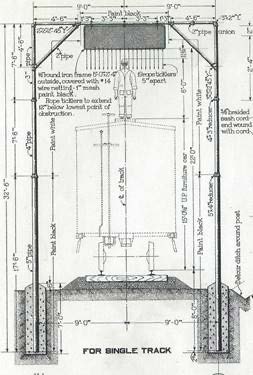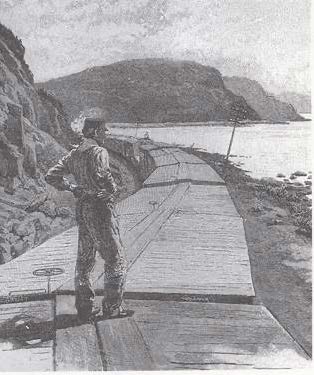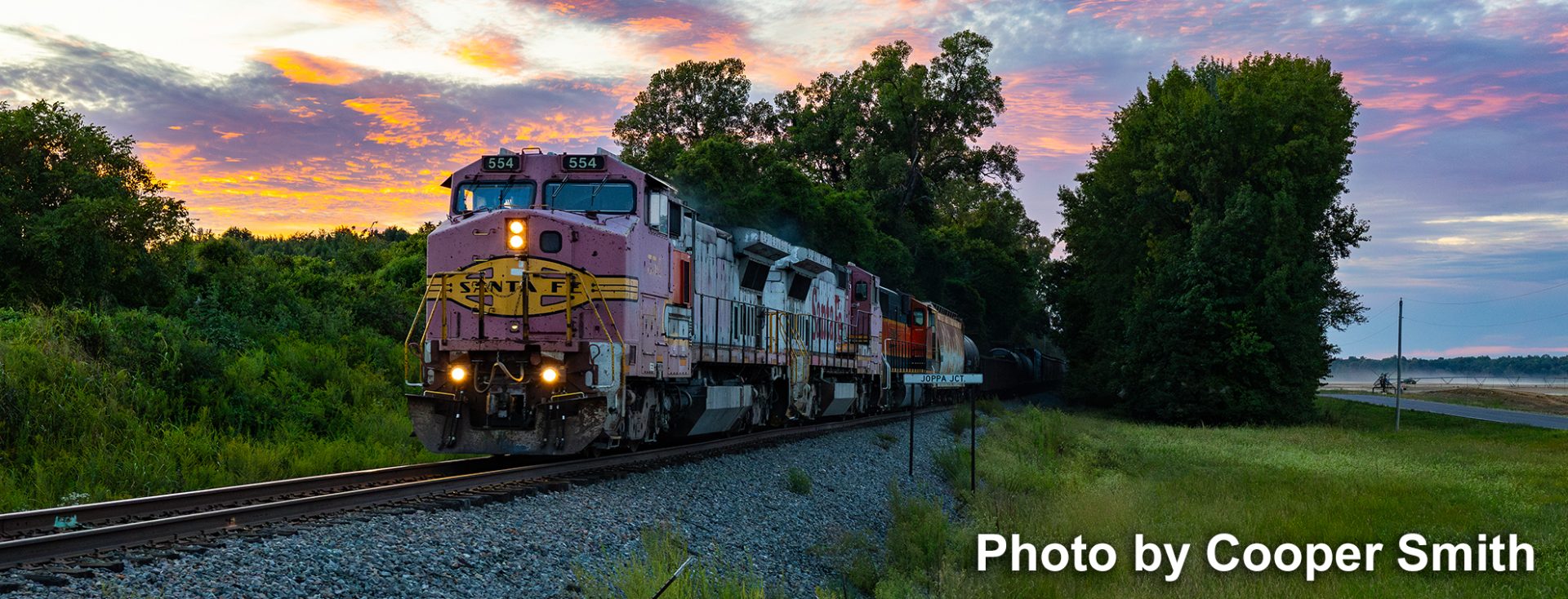

Telltales, are another piece of railroad infrastructure no longer seen along the right-of-way. In the days before air-brakes, hand brakes on each car stopped the train. On a whistle command from the engine, brakemen would scamper from the head end and the caboose, going car-to-car winding down the brakes. Imagine running and jumping aboard a moving train in a wind driven rain or snow storm.
It wasn’t unusual for a train to reach its destination with fewer brakemen than the beginning of the trip. With men on top of a moving train, an immediate problem was warning them of tunnels or other overhead obstructions. Telltales like those diagrammed provided a degree of safety and warning, in that the closely spaced knotted ropes would slap them in the face, sometimes taking a hat along with it. A narrow wooden walkway ran the length of the car. In those early days most cars were box cars and flat cars. After the 1869 invention of air-brakes by George Westinghouse, crewmen no longer needed to expose themselves to such danger while underway.
The walkways and ladders accessing them were retained, however, as it provided a platform for brakemen and switchmen to pass signals to the engineer in switching moves. With the advent of steel boxcars and covered hopper cars, the walkway was a non-skid grid, and over time hand-held radios became the norm.
As trains got longer, faster, and had an expanding variety of rolling stock, moving from car to car was no longer practical or necessary, and rooftop walkways and ladders have disappeared. Tank cars, tri-level automobile transporters and piggy-back equipment, not to mention OSHA helped change the game. Rolling stock now must be completely stopped while personnel board or offload.
Submitted by Gary Ostlund
Credits: Schematic – Union Pacific RR, Artwork – artist unknown, book: Age of Steam by Lucius Beebe & Charles Clegg
